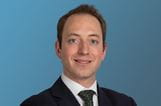- Home
- Blogs
Fibrogen v Akebia: Court of Appeal judgment on sufficiency of functional claims
Browse this blog post
Related news and insights
Publications: 14 March 2024
Infringing gin part II: Court of Appeal victory for M&S against Aldi’s copycat design
Publications: 13 March 2024
Abuse of dominance enforcement declines as new forums emerge
Publications: 13 March 2024
Publications: 06 March 2024
Shifting Strategies in U.S. Intellectual Property Disputes: Lessons from 2023
The judgment is notable in that Birss LJ, who gave the leading judgment, sets out a new approach to the construction of claims that are limited by functional features, which then plays a key role in Birss LJ’s assessment of plausibility (which he prefers to refer to as reasonable prediction) and undue burden insufficiency.
The decision could be an important one for future cases involving claims to multiple compounds (which are typically defined by structural features), where those claims are also, expressly or implicitly, limited by functional features. Insufficiency arguments are almost invariably a key part of any validity dispute relating to such claims.
The relevant claims in the Fibrogen patents were second medical use claims for the treatment/prevention of certain types of anaemia using certain compounds limited by structural (heterocyclic carboxamides) and functional features (inhibition of HIF-PH enzyme activity and increased endogenous erythropoietin (EPO)). More specifically, the two claims that were focussed on in the Court of Appeal judgment (with integers labelled as set out in that judgment) were as follows:
Claim 8A (a Swiss form use claim):
(A) Use of a heterocyclic carboxamide compound selected from the group consisting of
(B) pyridine carboxamides, quinoline carboxamides, isoquinoline carboxamides, cinnoline carboxamides, and beta-carboline carboxamides
(C) that inhibits hypoxia inducible factor (HIF) prolyl hydroxylase enzyme activity
(D) in the manufacture of a medicament for
(E) increasing endogenous erythropoietin
(F) in the prevention, pretreatment, or treatment of anemia associated with kidney disease,
(G) wherein the anemia is associated with chronic kidney disease.
Claim 19A (an EPC 2000 product for use claim):
(A) A heterocyclic carboxamide compound selected from the group consisting of
(B) pyridine carboxamides, quinoline carboxamides, isoquinoline carboxamides, cinnoline carboxamides, and betacarboline carboxamides
(C) that inhibits hypoxia inducible factor (HIF) prolyl hydroxylase enzyme activity
(D) for use in
(E) increasing endogenous erythropoietin
(F) in the prevention, pretreatment, or treatment of anemia associated with kidney disease,
(G) wherein the anemia is associated with chronic kidney disease,
(H) wherein the compound is a compound of Formula (I) wherein [chemical Markush formula]
At first instance, Arnold LJ had held the claims to be insufficient on the basis that: (i) it was not plausible that substantially all the compounds satisfying the structural definitions would be effective in inhibiting HIF-PH, increasing EPO or otherwise treating anaemia; and (ii) it would be a substantial research project to identify any compounds other than those specifically identified in the patent and, as such, the invention could not be performed across the scope of the claims without undue burden.
Arnold LJ came to this conclusion because he had construed the claim as implicitly promising that substantially all compounds which satisfied the structural requirements of the claims would have the claimed therapeutic efficacy.
Reasonable prediction/plausibility
While Arnold LJ’s assessment of plausibility had focussed on the compounds that satisfied the structural limitation of the claim (as explained above), Birss LJ sets out a different approach to the appropriate question to be asked.
According to Birss LJ, the question is whether it is possible to make a reasonable prediction the invention will work with substantially everything falling within the scope of the claim. In his approach to this question, Birss LJ sets out the importance of first identifying the scope of the claimed compounds, distinguishing between two types of functional limitations – (1) those that act to limit the claimed class of compounds and (2) those that tell you the desired effect of the invention.
Birss LJ explains that this distinction is first applied to determine what falls within the scope of the claim and the technical effect to be achieved by the invention, before assessing the whether it is plausible (or whether a reasonable prediction can be made) that the invention will work across the breadth of a claim.
Birss LJ sets this out in three steps as follows:
- Identify what it is which falls within the scope of the claimed class. The claimed class can be identified by the structural and/or functional features (referred to as ‘step one’ functional features) that limit its scope. In the present case, the claimed compounds were those with the structural and functional features of the claim (heterocyclic carboxamides that inhibit HIF-PH and increase endogenous EPO (for which there were appropriate tests)).
- Determine what it means to say that the invention works, i.e. what is the invention for? Birss LJ refers to this as the ‘step two’ functional features. This could be the therapeutic effect achieved by the structural and/or ‘step one’ functional features of the claimed class. In the present case, this was to treat a particular type of anaemia.
- Ask whether it is possible to make a reasonable prediction the invention will work with substantially everything falling within the scope of the claim. In the present case the question was whether it is possible to make a reasonable prediction that compounds which satisfy both the structural and ‘step one’ functional features (i.e. the inhibition of HIF-PH and the increase of endogenous EPO), will be useful to treat that particular type of anaemia. Taking the above approach, he found that it was indeed plausible.
In taking this approach, the ‘step one’ functional limitations of a claim are applied to define the scope of the claimed compounds, which are then assessed for plausibility / reasonable prediction, rather than starting from the structural limitations and asking whether it is plausible that all compounds with those structural limitations satisfy all the functional features of the claim.
Undue burden
In his assessment of undue burden, Arnold LJ applied a threshold of sufficiency that required that the skilled person must be able to identify substantially all compounds covered by the claim without undue burden.
Birss LJ however also disagreed with this approach, and instead set out that the appropriate question is whether it is possible to perform the invention across the scope of the claim without undue effort.
Birss LJ addresses undue burden insufficiency by breaking it down into two elements. First, it must be possible for the skilled person, without undue burden, to identify some (but not substantially all) compounds beyond those named in the patent which are within the claimed class (i.e. those defined by both the structural and ‘step one’ functional limitations) and therefore are likely to have therapeutic efficacy. Second, and separately, it must also be possible for the skilled person to work substantially anywhere within the whole claim (Regeneron v Kymab and Idenix v Gilead). In other words, it must be possible for the skilled person, given any sensible compound within the structural class (or substantially any), to apply tests without undue burden to work out if it is a claimed compound because it meets the claimed functional features (i.e. in this case inhibiting HIF-PH and increasing endogenous EPO).
Floyd LJ agreed with Birss LJ’s judgment but added his own comments on sufficiency (because the Court of Appeal was differing from Arnold LJ, “a patent judge of enormous experience and distinction” and because the issues “are of importance to the patenting of inventions in this important area of technology”).
Conclusion
Birss LJ has however made clear in his judgment that it is still the case that a patentee cannot simply claim “everything which works” (e.g. a claim to the use of any compound (without limitation) to treat a particular disease). However a therapeutic use claim in respect of compounds which meet both structural and/or functional requirements will have a greater prospect of being held sufficient: This will be so if:
(i) a reasonable prediction can be made that compounds which satisfy the claimed structural and/or functional features will achieve the claimed therapeutic efficacy;
(ii) there is no undue burden in identifying compounds which satisfy the claimed structural and/or functional features and in determining whether a given compound satisfies those features; and
(iii) it is possible for the skilled person to work substantially anywhere within the whole claim, i.e. there is no specific region of the claimed scope for which testing the functional features would be an undue burden.
While Birss LJ does not view claims limited by functional features as being objectionable in principle (including those claims that cover compounds that have not yet been invented), in his review of the case law from the UK, Germany and the EPO, Birss LJ does distinguish between those circumstances in which (1) there is a functional limitation where examples of such compounds are provided and appropriate tests can be applied, without an undue burden, to identify further compounds with the desired functional feature, and (2) what he refers to as ‘reach through’ claims, where a particular functional feature is claimed without support for how such compounds could be made or tested. Despite the more lenient approach to claims limited by functional features, it can still be expected that these latter claims will continue to be insufficient.


